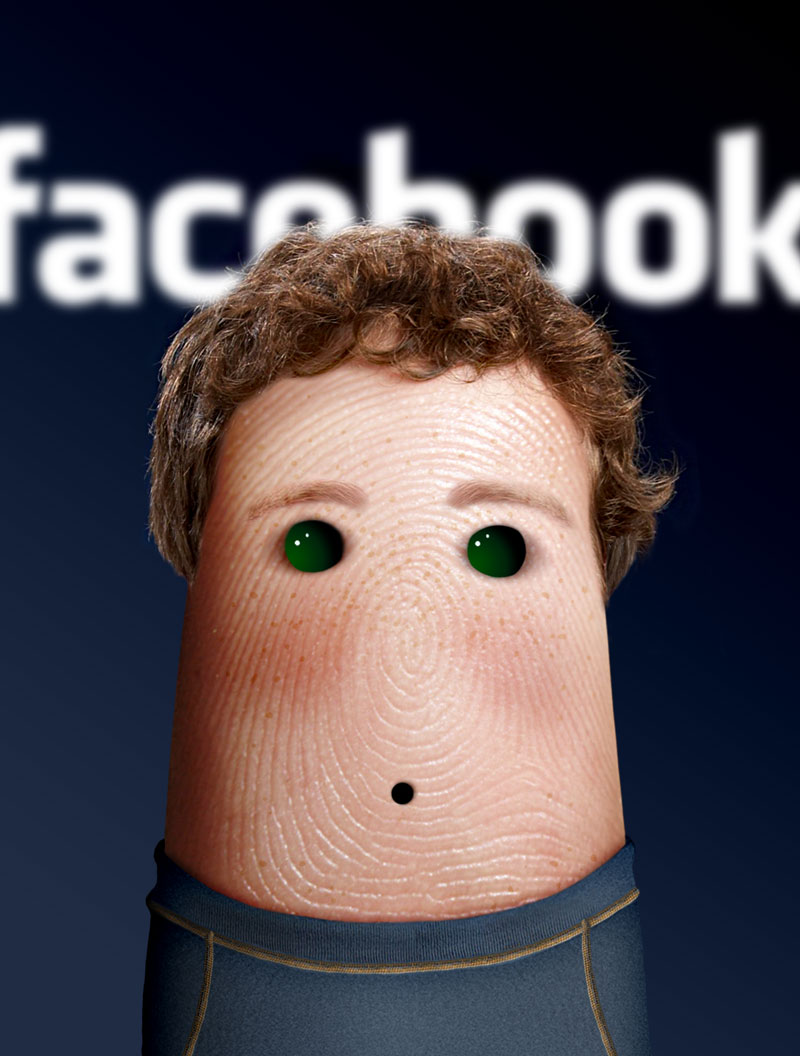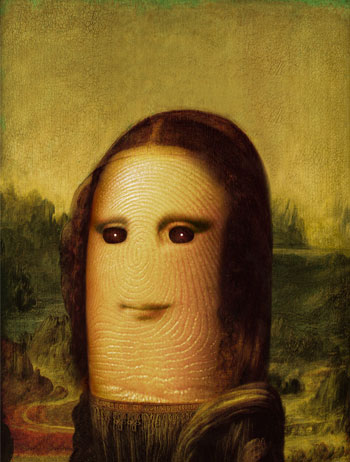
Robohub.org
If your avatar could talk, what would it say?

When I was in high school I was a big fan of graphic novels. In art class I used to splash out paintings – portraits mostly – and would write on them, giving the portraits word balloons, like a comic book. I wanted to portray personalities more than portraits. Of course my art teacher hated this and she’d box my ears, telling me that painters should not write, and that writers should not paint. She even called me an artistic criminal.
But I went on (as you did, dear reader) to make things like Twitter accounts and LinkedIn profiles and selfies that I’d then tag with some text and did just that – put words with the picture.
Today we’re all portrait artists and writers. But with cameras in our phones and publishing tools that allow us to be both exhibitors and viewers in the often perverse universe of social media, it’s not so much about self-expression as it is about identity. We all write blog posts and put an image in them, and rarely does a selfie not include some tagline that’s supposed to be clever or witty, since, like all self-effacing artists, we want to be clever and witty and get into the mosh pit of show-n-tell.
Selfie = Profile = Account = Avatar = Self-portrait = ID
Whether you call it a profile, an account, or an avatar, you’re making a self-portrait. It’s your ID. It might a 2D profile, or it might be a 3D avatar for a game, but when you upload a photo of yourself and then you add some text, you’ve made a self-portrait ID that’s got something to say.
And you make IDs for yourself more often than you might think: if you’ve got a Twitter account, then you’ve done this; if you’ve got a Facebook or LinkedIn account, then you’ve done this; even when you pick some dumb photograph like the flower or the horse to use as your login image for OSX or Windows, you portray yourself with that image, and then you write your name next to it. We all have dozens (if not hundreds) of these weird little text-garnished self-portraits scattered all around the Internet.
Your avatar is your self-portrait, and it has more value than you think.
Regardless of your ability to draw or write a verse, these self-portraits you’ve made are very, very valuable.

Portraits have always been valuable, and this is because our identities are valuable. The royalty of Europe used to have portraits painted as a means of immortalizing their ID onto the wall of a castle, and the money required to hire an artist to paint their face for all the castle-folk to see was a declaration of power, influence, and wealth. Even when the camera was invented, portraits were still valuable, and sitting for a portrait was a sign of status. Today a face on the cover of a magazine is the same. It’s a social value.
Not all of us can be Portuguese Kings, but those days are past us anyway. Today we wallow in the attention of social media by building pages that proclaim how great our life is (or how miserable), or draw attention to things that interest us, and we have little numbers in social media sites that measure our self-portrait avatar on some social scale. Our avatar self-portraits, therefor, not only have text, but they also have numbers so that we can see how they’re performing – and that number ranks the value of our avatar self-portraits.
These avatar self-portraits generate various kinds of value, in terms of privacy, relationships, organization, access, and even money:
- Edward Snowden demonstrated that value in terms of privacy with the NSA revelations; why would the NSA spend all that money, time and effort collecting the information if it wasn’t valuable?
- Every time you talk with family, friends and work colleagues via Skype, you demonstrate that value in terms of relationships; why would you spend all that time on Skpye if the relationships were not valuable?
- Your user account on Apple’s iCloud is something that is of value to you to help you organize your information, schedule your day, and purchase the virtual commodities that help you navigate the city, purchases, and social network. That’s value expressed in terms of quality of life, quality of organization, and quality of access.
- And, most obviously, companies like Google, LinkedIn, Twitter, and Facebook mine our avatars’ data and build a cultural value system that is so valuable it is measurable in terms of billions of dollars per year.
Whether it’s privacy, money, identity, relationships, or money, the value of our self-portrait avatars is important to the very structure of society, and this has been the case for a very long time.
It used to be that only the very wealthy were able to afford portraits that lasted after their death and secured their position in history: a portrait hanging on a castle wall is evidence of the individual’s importance (both historically and financially) to the building itself; people used to pray to the portrait of the Pope; swear allegiance to the image of the king; and even today it is common practice in the US and many other countries to hang the portrait of the President or head of state in government offices.

But pop culture has a way of transforming things that were untouchable into things that can be handled and manipulated by the average person. It takes things that were ‘out of touch’ down off their pedestals and out of their glass cases, and makes them into something smaller that can be changed, edited and owned.
The avatar is a pop culture version of the self-portraits of classical history, and they allow us to change and distribute the portraits of ourselves as the royalty of the Renaissance used to do with their portraits. We use our avatars today to buy, sell, negotiate, advertise, rate, share, trade, learn, teach, train, talk, read, listen, write, and have fun with family and total strangers. Our avatars can do far more than a classic portrait can do because they are interactive, we can handle them, and they belong to us in many small pieces.
What if your avatar could talk for you?
What if you had an autonomous avatar – a version of you that can talk for you when you’re not there – that was your doppelgänger? What if it was able to protect your privacy, support your relationships, improve your quality of life, and make you money while you slept?
At Geppetto Avatars, we wonder about this next step. What does it mean if an avatar is able to talk without a person behind it pulling the strings? If you were to take all of the content you’ve written, and then provide your avatar with the ability to speak all that knowledge that bangs around in your skull, what would it say? If you had a self-portrait that could talk to you, what would you discuss with each other? If you could walk away from a mirror, and your reflection stuck to the glass, what would it say to the people it encountered after you left?
Now consider your job and the things that you do to make money in this world. Specifically, imagine the things that most bore you, and that you repeat daily. Imagine taking those words and gluing them, like a word-balloon, to that reflection of yourself in the mirror. Imagine that your avatar could discuss those things, share your knowledge, and contribute to a larger ecosystem in which you yourself no longer had to spend as much time doing these tasks.
Would it provide you with more privacy? Would you use it to interact with work colleagues? Or family members? Would it be a virtual assistant? What if it could answer your phone for you, or perform simple business tasks like ordering a shirt, calling a taxi, booking a reservation, letting someone know you’re running a bit late, buying a book from Amazon, calling to find out why your phone bill increased, looking for a good sandwich shop, and finding out what hours they are open?
Would we want these things? Would we learn about ourselves, or become more ignorant of what we like? Would we protect our privacy, or would we become vents of deprivatization?
Of course there is a nightmare that hides in these notions, a dark thing called polyopic heutoscopy – a psychotic state in which schizophrenics find themselves surrounded by their various alter egos. Could that nightmare, instead, be our future?
In the coming years these questions will be answered.

One day we will be able to build avatar self-portraits and set them loose in a larger ecosystem where they can speak with other people and avatars, to complete tasks for us and, much as a company might today, deliver messages, answer questions, listen, observe, collect information, organize information, barter, buy, sell, and serve as knowledge brokers and doppelgängers in an increasingly virtual world.
Today Geppetto Avatars builds healthcare avatars and instructional avatars that can discuss, listen, observe, and share information. They’re doppelgängers that liberate busy individuals from performing rote tasks, so that they can spend their time on higher value work instead.
Already there are a bunch of talking avatars running wild out there, and they’re turning out to be pretty valuable:
- Craig Mundie, Microsoft’s Chief Research and Strategy Officer showed how Microsoft’s Xbox Kinect and an avatar could facilitate group therapy sessions; people generally feel less intimidated by an avatar than by a human group leader.
- Research suggests that the experience of watching your digital look-alike uneventfully reach the front of the simulated line and order a pretend drink is real enough to help you learn to cope with similar situations in the actual world (thus reducing social anxiety).
- Virtual coaches can help people with PTSD. The director of this project, Skip Rizzo, says: “It leverages latent inhibition. If you expose somebody to something in a controlled environment in advance, when they face that challenge in the real world, there’s less chance of fear conditioning — which is at the base of PTSD.”
- According to Prof Jeremy Bailenson, avatars are becoming more popular. Kids in the US spend about an hour a day inside an avatar. To put that in perspective, they read print for about 38 minutes a day.
- And this week Watson acquired Cognea (formerly My Cyber Twin),which means that we’re about to see a lot more of this kind of thing.
The avatar is becoming the medium of the future. If your avatar could talk, what would it say?
All images courtesy Dito Von Tease / ditology Follow @DitoVonTease. If you liked this article, you may also be interested in:
- Facebook – Our ffriendly automated identity bender
- “A Paro walks into a club…” (or, Notes on the design of automated body language)
- The uncanny valet (or, Notes on the design of robot psychology)
See all the latest robotics news on Robohub, or sign up for our weekly newsletter.
tags: Avatars, robohub focus on arts and entertainment




